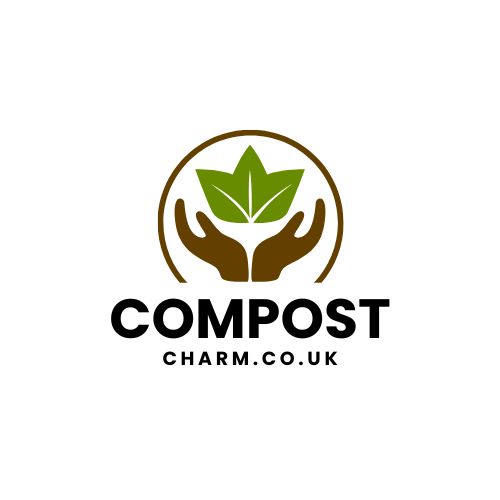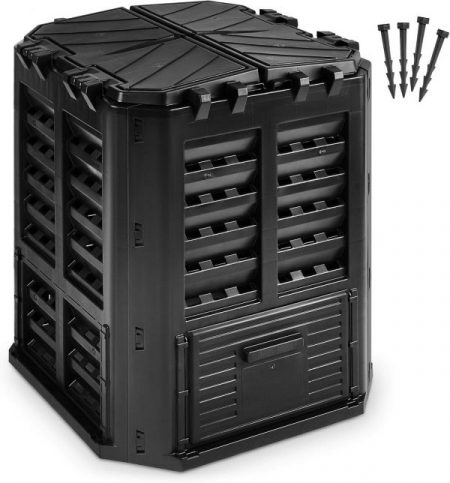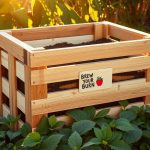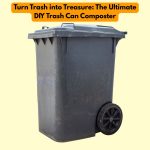It was one of those random Saturdays last spring when I realized my trash can was basically a graveyard for carrot peels and coffee grounds.
I’d been scrolling Amazon—probably looking for something dumb like novelty socks—when I stumbled across this Garden Composter Made from Recycled Plastic.
The reviews were solid, the price didn’t make me wince, and it had that “save the planet” vibe I could get behind.
I’m no tree-hugger, but I figured, why not? My yard could use a little purpose beyond being a weed sanctuary.
I hit “Buy Now” and started imagining myself as one of those people who actually does stuff with their food scraps instead of just chucking them. The idea of this Garden Composter turning my kitchen waste into something useful—like, actual soil—felt oddly exciting.
My sad little flower bed and half-dead basil plant might finally get a fighting chance.
Plus, it’s made from recycled plastic, so I could feel smug about being green without really trying.
The Arrival: My Garden Composter Lands
A few days later, the box showed up, and I hauled it out back like I was unveiling a new toy. This Garden Composter wasn’t flashy—think matte black, no-frills, built to last—but it had a vibe that said, “I’m here to work.” It’s 82 gallons, which sounds huge, but it’s actually just right for my smallish yard.
I plunked it down near the fence, where the grass is more dirt than green, and cracked it open. No assembly required?
Score. I’m the guy who once lost a screwdriver mid-IKEA project, so this was perfect.
I tossed in my first load: some apple cores, a handful of grass clippings from my last (terrible) mowing attempt, and a few eggshells I’d been saving in a bowl on the counter.
My wife thought I’d lost it—“You’re keeping garbage now?”—but I was committed. This Garden Composter was my ticket to a less wasteful life, and I was all in.
The Smelly Wake-Up Call
About a week later, I lifted the lid of my Garden Composter and nearly gagged. It wasn’t awful, but it was definitely… pungent. Like wet socks meets old veggies. I’d gone hard on the kitchen scraps—think soggy lettuce and melon rinds—and hadn’t balanced it out with dry stuff.
Rookie mistake. I poked around online and learned this thing needs a mix of “greens” (wet, nitrogen-rich stuff like food waste) and “browns” (dry, carbon-rich stuff like leaves or cardboard).
Too much green, and it’s a swamp; too much brown, and it’s a snooze fest.
I grabbed some old Amazon boxes—ironic, right?—shredded them up, and mixed them in with a stick. Gave it a good stir through the handy hatch on this Garden Composter, and within a couple days, the smell mellowed out.
Crisis averted. I was starting to get the hang of this, and it felt good—like I’d tamed a tiny, stinky beast.
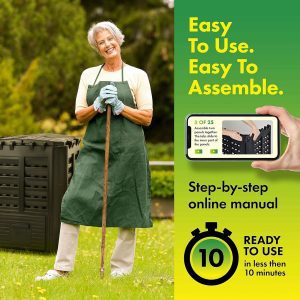
Why This Garden Composter Rules My World
Fast forward a month, and I was hooked. This Garden Composter was like a quiet little factory in my yard, churning away at whatever I threw in.
Banana peels, onion skins, even the twigs I’d raked up after a windy day—it all went in, and slowly but surely, it started looking less like trash and more like dirt. I’d peek through the hatch every few days, marveling at how the pile was shrinking.
It’s not instant, but that’s part of the charm. It’s chill, low-pressure, and doesn’t care if I forget about it for a bit.
What really sold me? It’s made from recycled plastic. I’m not out here preaching sustainability—my car’s not electric, and I still buy plastic-wrapped snacks—but knowing this Garden Composter was born from old bottles or whatever makes me feel like I’m sneaking in a good deed.
Plus, it’s tough. Rain, sun, a random hailstorm—it’s taken it all and still looks brand new.
The Neighborhood Buzz
One afternoon, my neighbor Jen caught me tossing some potato peels into the Garden Composter. “What’s that thing?” she asked, leaning over the fence with her dog yapping in the background. I gave her the rundown—how it’s this recycled plastic bin that turns scraps into soil—and she lit up.
“Oh, we’ve got so much yard waste! Dave’s always complaining about it.” Next thing I knew, she was texting me for the Amazon link.
I’m basically the Garden Composter evangelist of the block now.
Even my buddy Mike got curious when he came over for a beer. He’s not the gardening type—his yard’s mostly gravel—but he liked the idea of cutting down on trash runs. “Does it smell?” he asked.
I was honest: “Sometimes, if you screw it up, but mostly nah.” He’s still on the fence, but I caught him eyeing my Garden Composter like he might cave eventually.
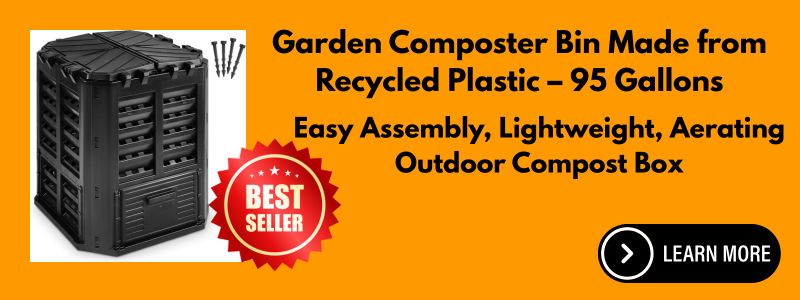
My Basil Plant’s Big Moment
By late summer, I had my first real haul of compost. It wasn’t a mountain—just a couple gallons of dark, crumbly goodness—but it felt like a win.
I scooped it out of the Garden Composter’s slide-out door (so convenient, by the way) and mixed it into the soil around my basil plant.
That poor thing had been drooping all season, barely hanging on. Two days later? Swear to you, it looked happier—leaves perkier, greener, like it’d gotten a spa day.
I’m no farmer, but seeing that payoff was huge. This Garden Composter took my literal garbage and turned it into something my plants loved.
It’s like I’d cracked a secret code: food scraps in, plant food out. I started eyeing my flower bed next—maybe some zinnias or something easy to keep the bees happy.
This recycled plastic wonder was unlocking my inner gardener, one handful of compost at a time.
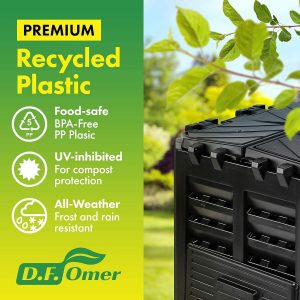
The Little Joys of Composting
Here’s what keeps me coming back to this Garden Composter: the small stuff. Every time I dump in a pile of veggie trimmings instead of cramming them in the trash, I get a kick out of it.
Every stir that shows it’s breaking down feels like progress. And when I pull out that finished compost? It’s like I’ve pulled off a heist against waste.
It’s not changing the world, but it’s changing my world, and that’s enough.
I’ve even started enjoying the ritual. I’ll wander out with a cup of coffee, lift the lid on the Garden Composter, and just… check in. It’s weirdly meditative, watching nature do its thing.
Are the worms I added last month thriving? (Yeah, I got brave and tossed some in—still freaks me out a little.) Is that avocado pit ever gonna break down?
No clue, but I’m invested now.
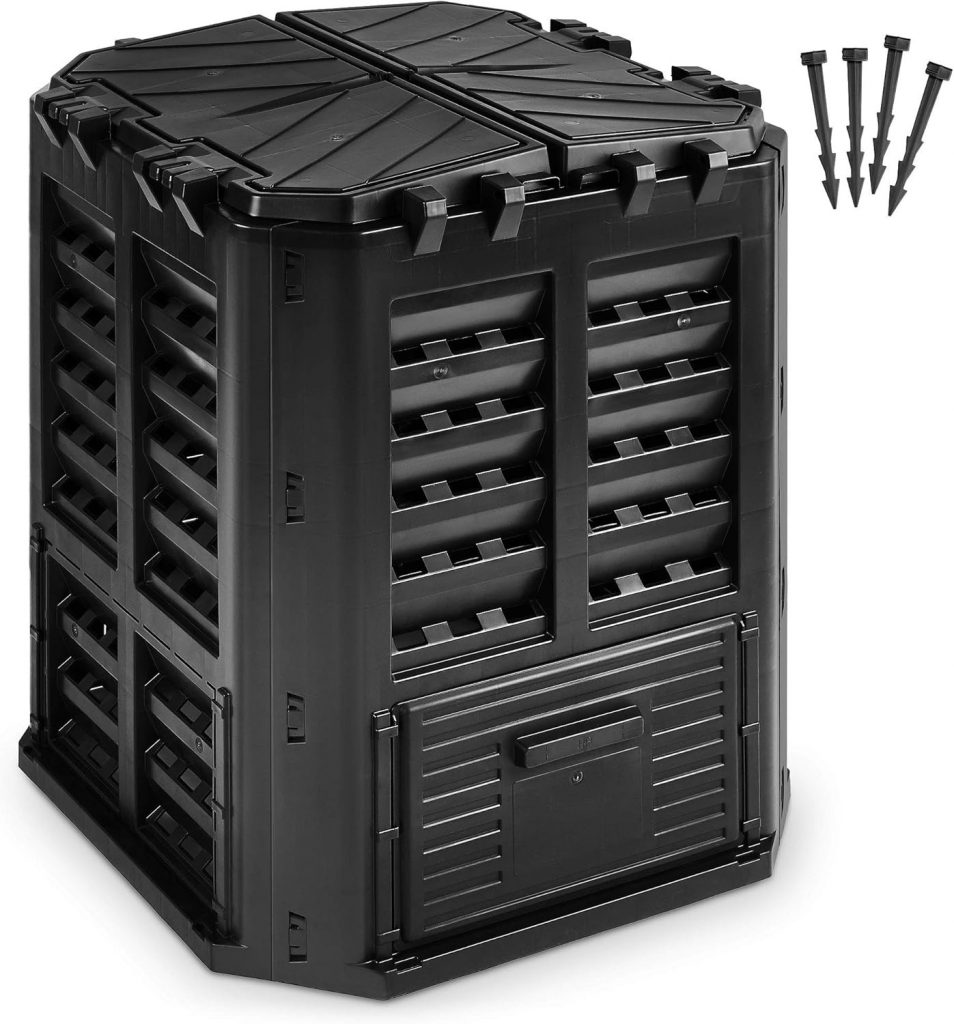
Tips from a Guy Who’s Winged It
If you’re eyeing this Garden Composter Made from Recycled Plastic—or any composter, really—here’s what I’ve picked up.
Don’t overcomplicate it: start with whatever scraps you’ve got and tweak as you go. Keep the green-brown ratio in mind—shredded junk mail’s a lifesaver if it gets soggy. Smell’s not a dealbreaker; just toss in some dry stuff and stir. And give it time—this isn’t fast food, it’s slow-cooked goodness.
Placement’s key too. I stuck mine in a shady corner where it’s out of sight but easy to reach. Too much sun dries it out; too close to the house, and you’ll smell it on a bad day.
My Garden Composter’s happy there, and I’m not tripping over it every time I mow.
The Bigger Picture (Sort Of)
Lately, I’ve been mulling over what this Garden Composter means beyond my yard. I’m not about to lecture anyone—I still forget to recycle half my cans—but it’s hard to ignore how much we throw away. Peels, cores, clippings—it adds up.
With this thing, I’m keeping some of that out of the landfill, and it feels good. Plus, it’s cutting my trash output and saving me from buying plant food. This recycled plastic bin’s pulling double duty, and I’m here for it.

Where I’m At Today
It’s March 27, 2025, and my Garden Composter’s still kicking. Winter slowed it down—cold weather makes everything lazy, even decomposition—but spring’s waking it up. I’ve got a fresh batch going: coffee grounds, pine needles, some kale stems I didn’t eat.
I’m already plotting where the next compost haul’s going—maybe some peppers this year, or at least a better shot at basil.
My yard’s still a mess, but this Garden Composter’s my secret weapon, quietly turning chaos into something useful.
I never thought I’d be this guy—the one raving about a compost bin—but here I am. It’s part trash fix, part plant boost, part recycled plastic win, and I’m obsessed.
If you’d told me last year I’d care this much about rotting scraps, I’d have laughed. Now? I’m out there checking it like it’s my side hustle, and I wouldn’t trade it.
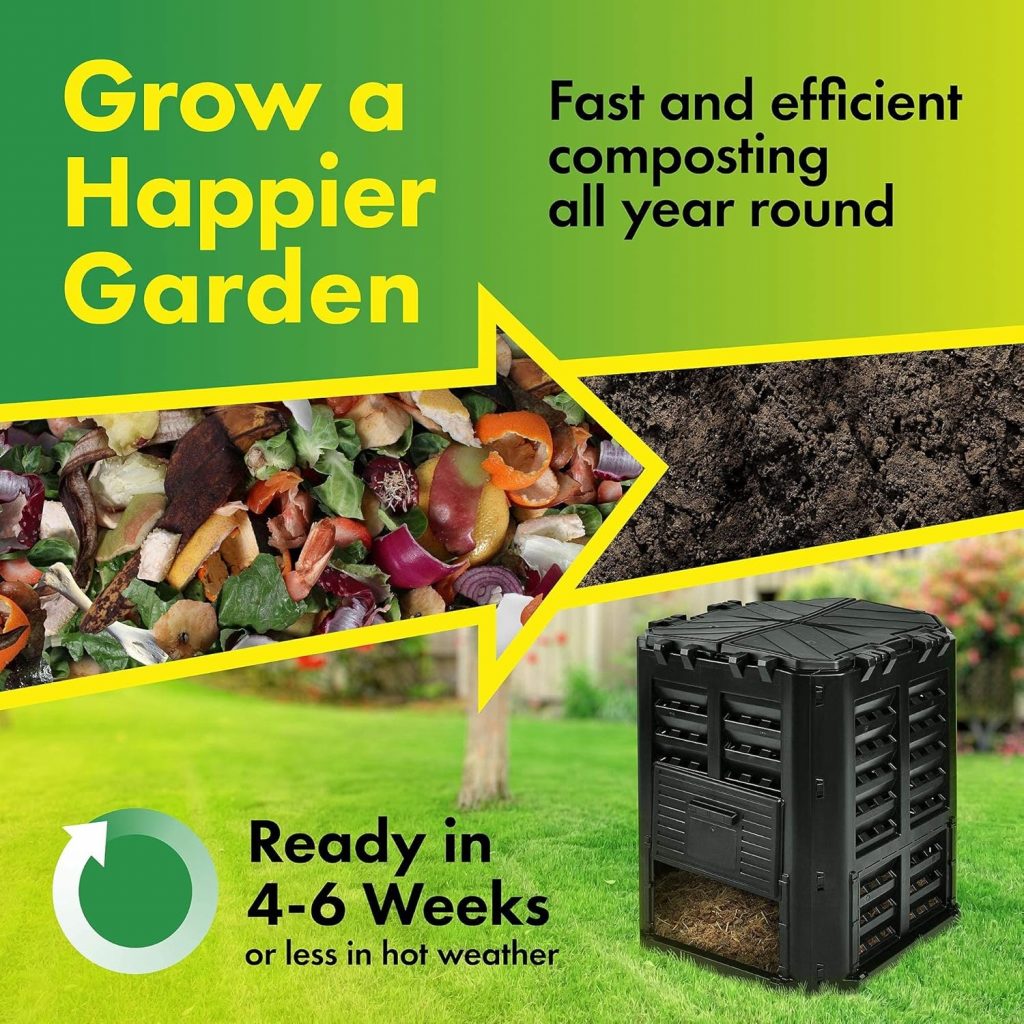
Wrap-Up
So, that’s my story with the Garden Composter Made from Recycled Plastic. It’s not fancy, it’s not perfect, but it’s mine—and it’s awesome. If you’re thinking about grabbing one, go for it. You don’t need a big space or mad skills—just a bit of curiosity and maybe a stick to stir with.
This thing’s turned me into a composting convert, and who knows?
Maybe you’ll be next. Now, I’ve got some orange rinds calling my name—time to feed the beast.
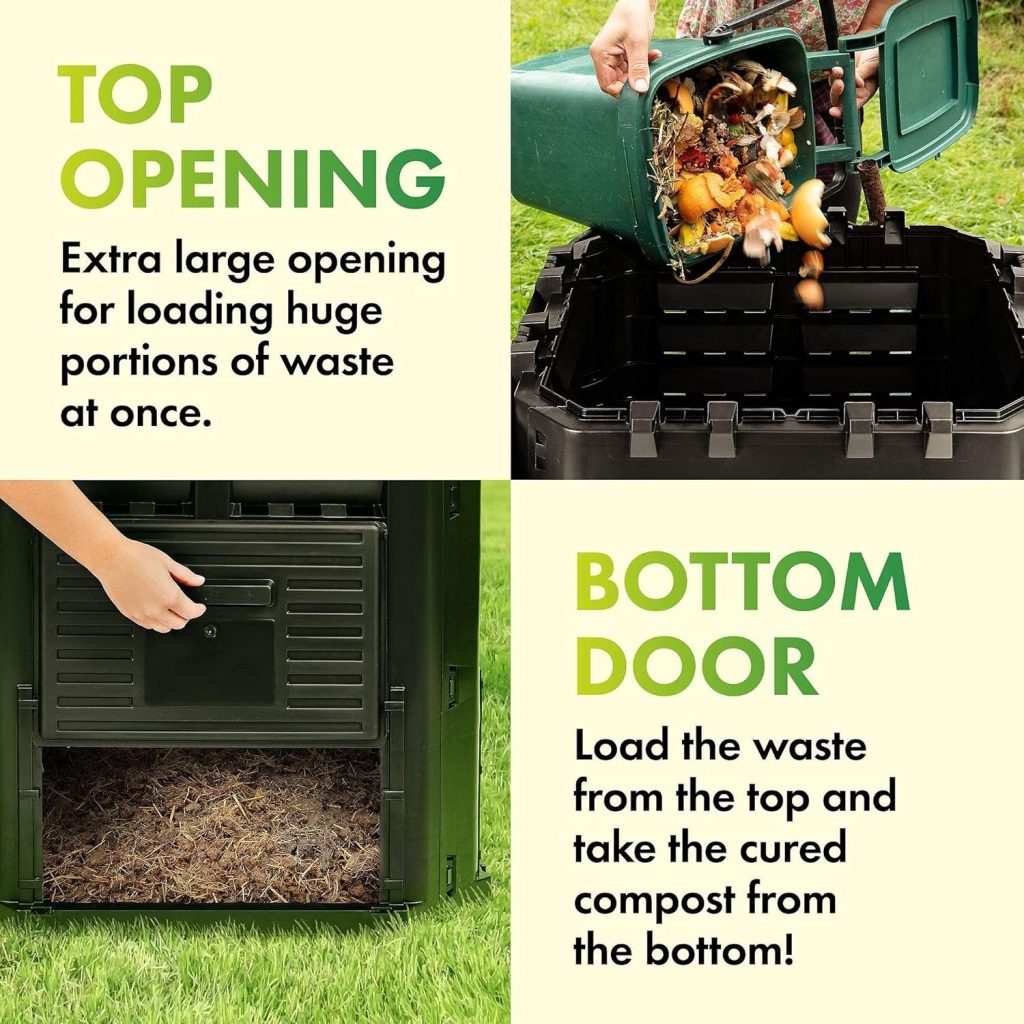
FAQs and Answers for the Garden Composter Made from Recycled Plastic
1. What can I put in this Garden Composter?
You can toss in all kinds of organic stuff—kitchen scraps like veggie peels, coffee grounds, and eggshells, plus yard waste like grass clippings, leaves, and small twigs.
It’s built to handle the usual suspects. Just skip the meat, dairy, or oily stuff unless you want a stinky mess or a pest party. I learned that the hard way with some watermelon rinds—balance is everything!
2. How long does it take to make compost with this Garden Composter?
It’s not instant coffee—it takes a few months, usually 3-6, depending on what you put in, how often you stir it, and the weather. Mine started looking like real compost after about four months, but I’m not exactly a pro at turning it regularly.
The recycled plastic keeps heat in, which speeds things up a bit compared to a basic pile.
3. Does this Garden Composter smell bad?
Not if you do it right! I had a whiff of funk early on when I overloaded it with wet scraps, but once I added some dry stuff like shredded cardboard, it calmed down.
The ventilation holes and lid help keep it from turning into a swamp. Keep it balanced, and it’s more “earthy” than “eww.”
4. Is it hard to set up this Garden Composter?
Nah, it’s a breeze. It snaps together without any tools—took me maybe 15 minutes while sipping a beer. The pieces are lightweight (thanks, recycled plastic!), so I could carry it to my yard spot no problem. Just make sure you line up the tabs right, and you’re golden.
5. How big is this Garden Composter, really?
It’s 95 gallons—sounds massive, but it’s about 2.5 feet wide and deep, and a bit over 3 feet tall. Fits nicely in a corner of my yard without hogging space. Big enough for a decent pile, but not so huge it’s overkill for a small setup like mine.
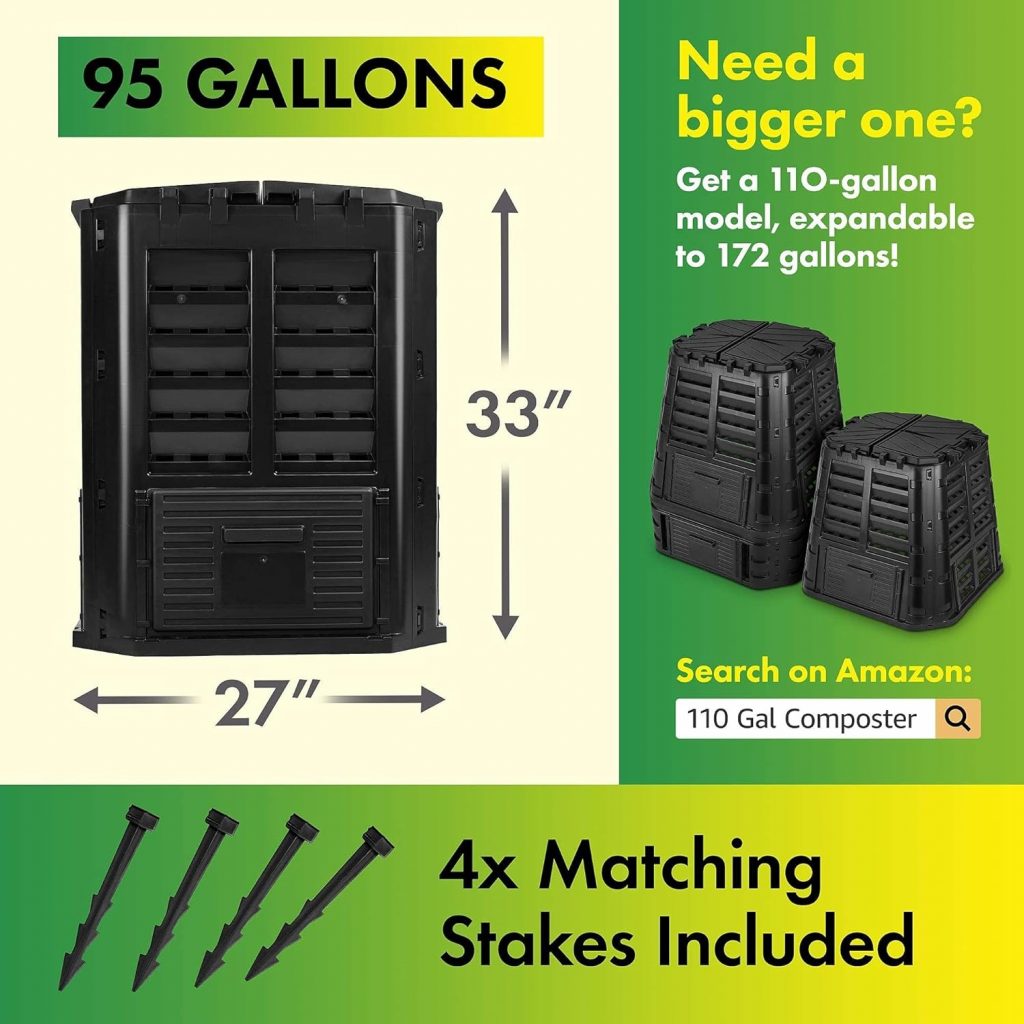
6. Can I use this Garden Composter in the winter?
Yeah, but it slows down when it’s cold—think hibernation mode. Mine kept going through winter, just at a snail’s pace. The black recycled plastic soaks up whatever sun there is, which helps a little. Spring wakes it right back up, though.
7. How do I get the compost out of this Garden Composter?
There’s a handy hatch at the bottom—slide it open, scoop it out with a shovel or trowel, and you’re set. I was surprised how easy it was to grab a bucketful without making a mess. No need to lift the whole thing, which is a win for my lazy side.
8. Will this Garden Composter attract pests?
Not really, if you’re smart about it. The lid fits tight, and there’s no big gaps for critters to sneak in. I haven’t had issues with raccoons or rats, but I don’t tempt fate with meat scraps either. Stick to plant-based stuff, and you’re probably fine.
9. Is the recycled plastic in this Garden Composter safe for my garden?
Totally—it’s BPA-free, so no nasty chemicals are leaching into your compost. I was stoked it’s made from recycled plastic too; feels like a double win for the planet. My basil plant’s thriving on the stuff, so I’d say it’s legit.
10. How do I know when the compost is ready in this Garden Composter?
When it looks dark, crumbly, and smells like fresh soil—not garbage—you’re there. Mine took a while to get that “black gold” vibe, but once it did, I knew it was game on for my plants.
If you see big chunks still, give it more time or stir it up.

Who Should Buy This Garden Composter?
This Garden Composter is a solid pick for a specific crowd—here’s who’d vibe with it, and who might not.
Perfect Buyers:
- Casual Gardeners with Small-to-Medium Yards:
- If you’ve got a little patch—like me with my patchy lawn and random tomato plants—this 82-gallon Garden Composter is just right. It’s big enough to handle your kitchen scraps and yard trimmings without taking over your space.
- Eco-Curious Newbies:
- Never composted before? This thing’s easy setup and low maintenance make it a no-brainer. I jumped in blind, and it didn’t overwhelm me. Plus, the recycled plastic angle gives you that feel-good eco boost.
- Budget-Conscious Green Thumbs:
- It’s not the priciest option out there, and it’s durable enough to last. If you want to cut waste and skip store-bought fertilizer without breaking the bank, this Garden Composter’s your match.
- People Who Hate Complicated Stuff:
- No tools, no fuss—just snap it together and start tossing stuff in. If you’re like me and dread instruction manuals, this is your kind of gear.
- Suburban Dwellers with Neighbors:
- It’s neat, blends into the yard, and keeps smells in check. My neighbor Steve didn’t even notice it until I pointed it out—perfect if you don’t want complaints.
Maybe Not For:
- Big-Time Gardeners or Homesteaders:
- If you’re churning through tons of waste—like from a huge veggie garden or livestock—this Garden Composter might feel too small. You’d fill it in a week and need something beefier.
- Apartment Dwellers with No Yard:
- No outdoor space? This isn’t your fit. It’s meant for a backyard or patio, not a balcony. Look into worm bins or countertop composters instead—my sister’s got one for her tiny place.
- Impatient Types:
- If you want compost in two weeks flat, this ain’t it. It’s steady but slow—my first batch took months. Tumblers or hot composters might suit you better if you’re in a rush.
- Folks in Super Harsh Climates:
- It holds up in rain and sun, but if you’re in hardcore winter zones or scorching deserts, the process might stall or overheat. I got by in mild weather, but extremes could test it.
- Pest-Paranoid People:
- It’s pretty secure, but if you’re terrified of even a slight chance of critters, you might overthink it. I had no issues, but I’m chill about a few bugs.

